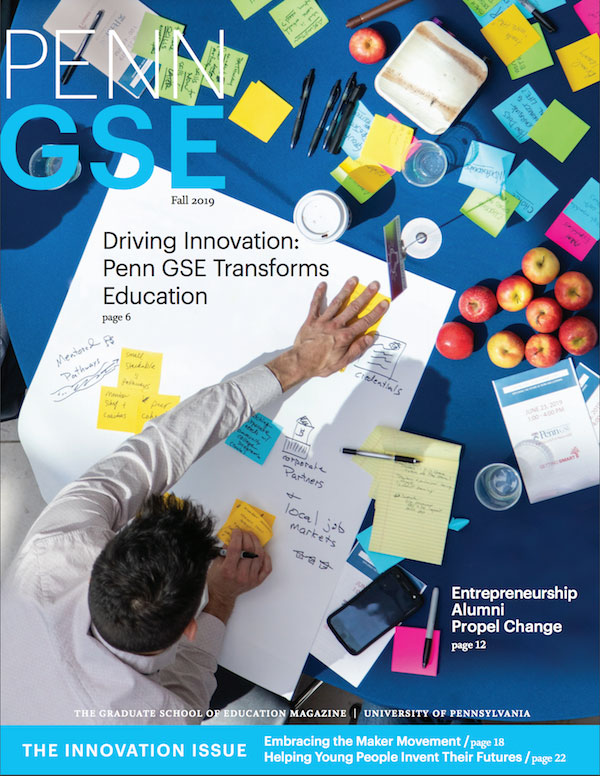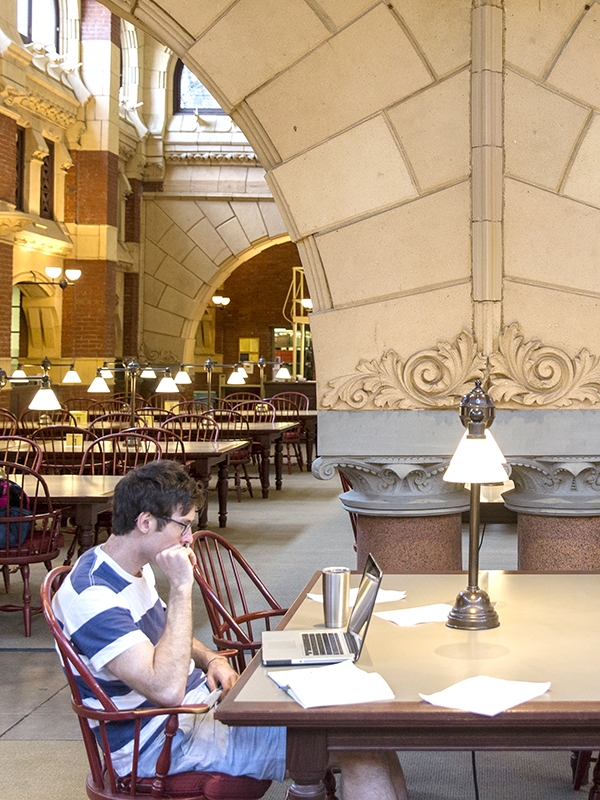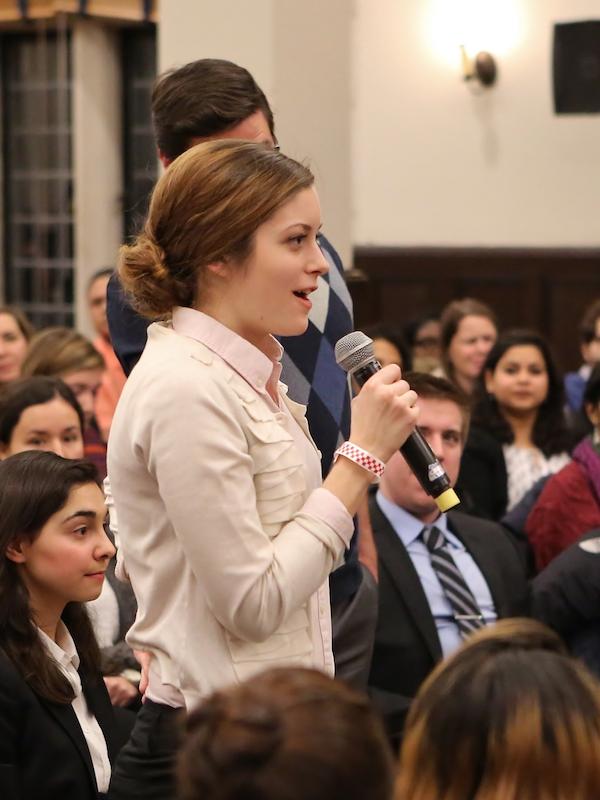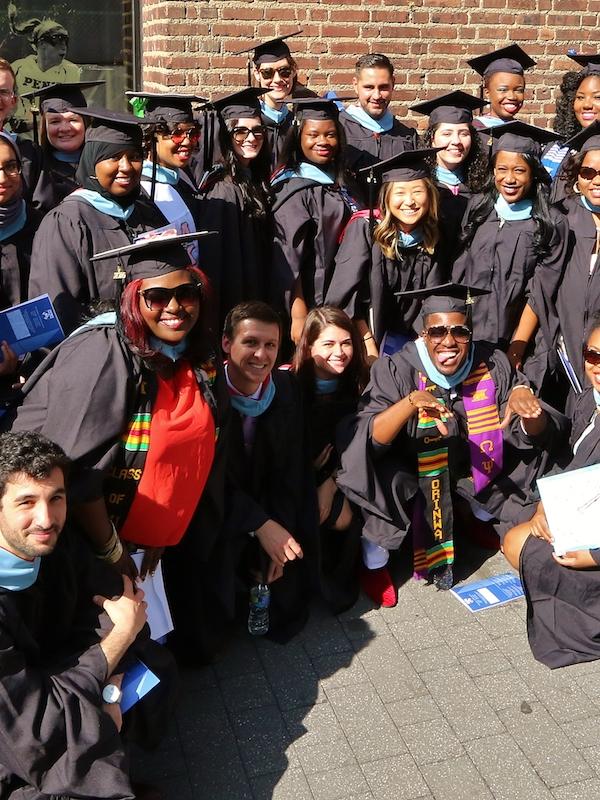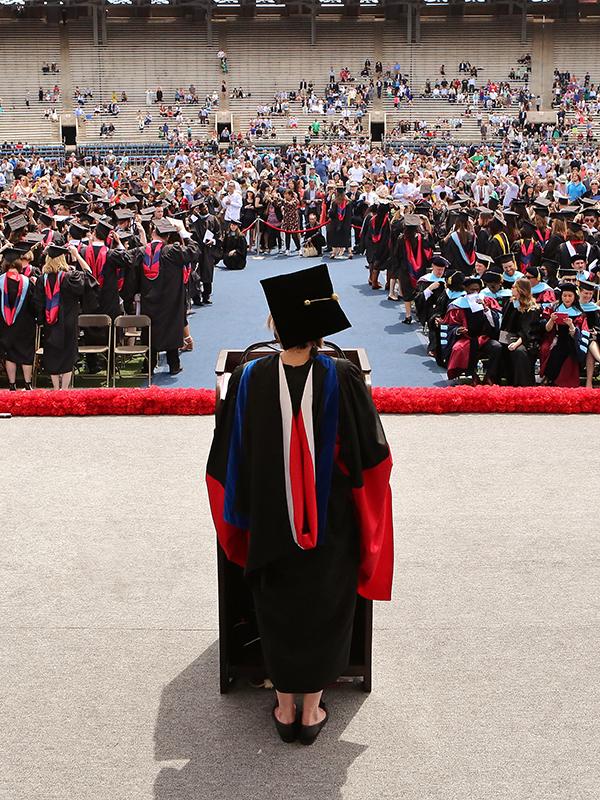Helping Adolescents Learn and Thrive: Penn GSE Professor Michael J. Nakkula on Supporting Young People
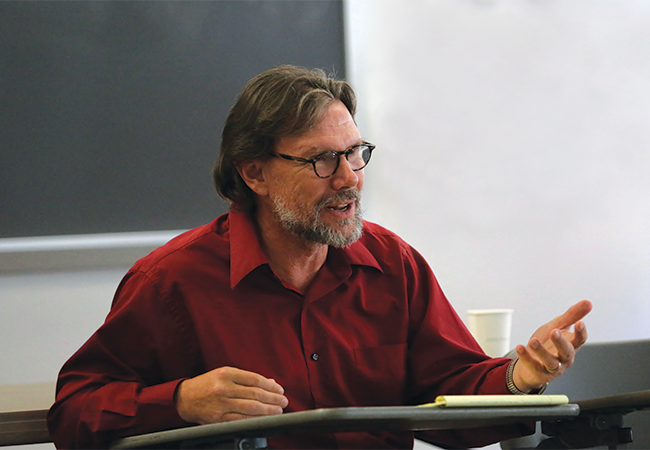
Michael J. Nakkula, chair of the Human Development and Quantitative Methods division, studies approaches to helping young people set goals, connect to support networks, and pursue the lives they want. Photo by Darryl W. Moran Photography
interview by Juliana Rosati
Young people face a variety of challenges—whether due to emotional, socioeconomic, societal, or other factors—that may interfere with their ability to learn and thrive. Penn GSE Professor of Practice Michael J. Nakkula, chair of the School’s Human Development and Quantitative Methods division, has spent decades investigating what approaches can change students’ life trajectories for the better. We sat down with him to discuss his work and what he enjoys most about teaching Penn GSE students.
Your work focuses on possibility development for young people. What does that mean, and how does it differ from other ways of looking at adolescent psychology?
I define possibility development as the capacity to conceive of possibilities in one’s life and then actualize them with support. This work started in the mid-nineties when I helped start a program at Harvard Graduate School of Education. We were looking at interventions meant to prevent problems, such as disengagement and substance abuse, that contribute to high school dropout rates. But it became clear to me that the need was less about preventing problems than creating opportunity structures that allowed young people to thrive or pursue their interests. The students we worked with almost always held aspirations for a better future, and it wasn’t only the “troubled” kids, but rather the vast majority of students who needed support to access better opportunities. So we shifted our focus to helping young people envision and pursue the lives they wanted, and it was amazing to see the impact on students.
This issue of The Penn GSE Magazine focuses on the theme of innovation. In your work you’ve described innovation as a key part of possibility development. How can innovation help young people?
In many ways, young people need to be entrepreneurs to invent the futures they want. Like someone developing a new business, adolescents can exercise creativity and innovation to envision what they would like to happen in their lives, and then create a plan to pursue their goal. Of course, access to resources and support is an important part of the process. In my current work with two middle schools in Philadelphia, we are doing what I call possibility mentoring. Groups of Penn GSE master’s students work with seventh graders to help them envision possibilities in their lives—for example, becoming a scientist—and create strategies for pursuing them, such as taking certain classes in high school and learning about college programs and who can help them along the way. We want them to get into the habit of setting goals related to their interests and pursuing them with support.
Why is support so important?
“We found that the schools did a good job of preparing the students for the academic realities of college, but not for larger challenges. Most first-generation and lower-income students who dropped out of college left due to a convergence of pressures that made it difficult to prioritize school.”
Many students are resistant to it. They don’t really believe it can help them, and unfortunately there often continues to be a stigma around the idea of seeking counseling. By calling our work mentoring rather than counseling, we’re trying to broaden students’ understanding of what it means to seek support. Similarly, one of the programs I’m studying in my current research, The Future Project, based in New York City, provides students across the country with highly skilled mentors called “dream directors.” We’re still determining our findings, but what we know so far is that having a key person in the school who students can go to on a regular basis for social and emotional support, without concern for being stigmatized, seems to help. Students stay in school and become more engaged in the learning process.
Are there other support structures, beyond mentoring or counseling, that can help students pursue possibilities in their lives?
Over time, I’ve explored various approaches. Support can mean mentoring or counseling, but it can also mean involvement in a community group. For example, one of my projects has spent ten years studying two early college high schools, which are designed to help urban high school students work toward an associate’s degree while earning their high school diploma. We found that the schools did a good job of preparing the students for the academic realities of college, but not for larger challenges. Most first-generation and lower-income students who dropped out of college left due to a convergence of pressures that made it difficult to prioritize school—for instance, they might have needed to work to support a family member. And it was the students who got connected to a support network early in college—whether it was a religious community, mentoring community, or an arts or athletic community—who were more likely to stay.
Support can also mean having the opportunity throughout the day to bring your personal experiences into the classroom and form deep connections with your classmates and teachers. In this vein, one of my other projects studied the Facing History High School in New York City. It uses a model across the curriculum called “Facing History and Ourselves,” which asks students to engage in self-reflection and discussion to make sense of what they are learning in light of their own life experiences, not only in history but across the curriculum. For instance, an English teacher might ask students to discuss how themes in a work of literature relate to their own lives. We found that by the end of twelfth grade, students were remarkably connected to one another and the educational environment, and committed to a future that included college.
Support may need to be customized to students’ identities and backgrounds. One of my studies looked specifically at young girls of color in high school. We found that due to their experiences of racism and sexism, they needed opportunities to develop the qualities of resistance and resilience to avoid internalizing harmful messages. This might be seen as a form of “critical consciousness,” or the ability to recognize and question social forces.
Overall, what can schools do to better serve students?
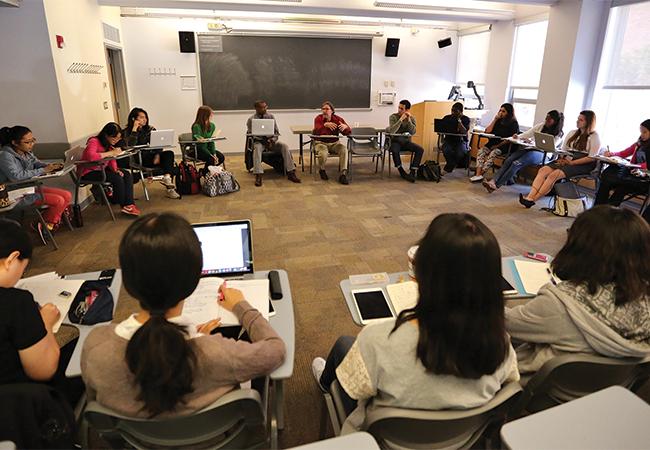
There needs to be a cultural shift, and even an educational shift, towards self-understanding and understanding other people. We spend remarkably little time in many schools helping students understand themselves. But when we do, some of the everyday challenges in students’ lives become more transparent and speakable as opposed to remaining hidden. In one of my current projects, The Project for Mental Health and Optimal Development, which was cofounded with Ed.D. student and educational consultant Andy Danilchick, we’re entering our first year of bringing together a consortium of school districts in the Philadelphia area for monthly meetings at Penn GSE and training to help school personnel promote better mental health. Overall in my work, we’re providing qualitative analysis of various models as a way of bringing practical wisdom forward. If students and teachers perceive an educational model as effective, we want that information to be available so other schools can consider adapting the model for their own contexts.
What is next for your work in possibility development?
“Our students bring tremendous passion for issues around learning, development, educational access, and diversity. When I go into class, I have to be prepared for tough questions.”
I recently coedited a three-volume series, Adolescent Psychology in Today’s World: Global Perspectives on Risk, Relationships, and Development (Praeger, 2018). It features chapters by a variety of authors around the world, including twelve Penn GSE students and alumni. The books are meant to be the first step in building a global possibility network. The authors and I want to share our practices and look at how they might be adapted to contexts in other parts of the world. For example, the possibility mentoring we’re doing in the United States will be adapted for a project I’m involved with in China, where we are trying to help youth from rural families who lack familiarity with higher education. I’m also working with Penn GSE Professor of Practice Sharon Ravitch and some of her colleagues in Nicaragua and India to do similar work in those countries.
You are chair of the Human Development and Quantitative Methods division at Penn GSE. Could you say a little bit about the vision of the division?
One of the things that we believe we’ve done innovatively is to bring a serious mental health overlay into school counseling. To this day, the field of school counseling is hesitant to embrace too much mental health counseling work out of concern that it falls beyond the scope of what counselors are prepared for and have time to do. Our argument is that school counselors are sometimes the only service providers a student will see. Our integrated approach has made us attractive to educators who have worked with students who need something more than academic and school-related guidance. In addition, the recent merger of the Human Development and Counseling division with the Quantitative Methods division has benefited our research. We are now working more closely with colleagues who can help us to refine our research questions, data collection methods, and analytic approaches. Overall, I see our division as a unique integration of basic and applied developmental research, with an overarching mission of better understanding processes that enhance the well-being of children, youth, and families in Philadelphia and around the world.
You received the 2016 Penn GSE Excellence in Teaching Award. What do you enjoy most about teaching Penn GSE students?
Our students bring tremendous passion for issues around learning, development, educational access, and diversity. When I go into class, I have to be prepared for tough questions. It could be related to language use around race or gender, for example. Our students want to know if you are really attuned to the issues that matter to them, and to students and schools. I don’t find that to be a burden; I find it exhilarating, actually. In addition to the classes I teach, I have research teams that are organized every year, and the students who join them gain hands-on experience that allows them to put into practice what they’re learning in class. One of the gifts of working with students like ours is that you see talent that transcends your own, and you know they’re going to go out and do good work. I want to be a part of the puzzle by playing an important role in their development and the missions they have for educating and helping others.
This article originally appeared in the Fall 2019 issue of The Penn GSE Magazine.

